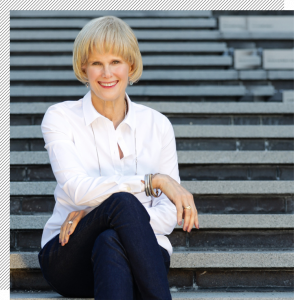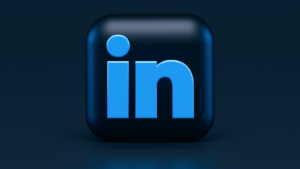Cold email has definitely gotten a bad wrap over the years — with many people associating it with spam. But this couldn’t be further from the truth. In fact, cold email is a valuable strategy that attracts people to your brand.
In this article, we’re going to break down why cold emailing is a valuable strategy for your small business. Then, we’ll discuss what you need to know in order to craft cold emails that get real results.
But first…
What is a cold email?
A cold email is an email you send to a potential client or business associate with whom you don’t currently have a connection or working relationship. The best cold emails are personalized and crafted to target a specific person — creating a personal conversation that doesn’t feel cold or intrusive.
You can use cold email to…
- Connect with a potential lead you find on LinkedIn.
- Contact an industry expert with whom you’d like to collaborate.
- Reach out to an industry website about guest posting opportunities.
And there are even more situations where cold emailing can serve a strategic purpose for your brand. This versatility is what makes cold email such a wonderful strategy to keep in your brand’s toolkit!
Now let’s talk a little bit about what cold email is not.
Cold email is not spam.
There are a lot of key differences between a cold email and spam.
For starters, cold emails are addressed to one specific person, whereas spam is sent to many different emails with no distinction between them. Cold email, on the other hand, is meant to be personalized — you take time to learn about the person you’re emailing and tailor your message accordingly.
In addition, spam usually has a commercial motive — in other words, you’re being sold. Cold email, on the other hand, begins a mutually beneficial business relationship with someone.
One great way to test whether your email falls in the spam or cold email category is to read it aloud. While reading, ask yourself, “Would I be comfortable saying this to someone I meet at a business conference?” If the answer is no, then you need to revise it.
Why Invest in the Best Cold Email Strategy?
Cold emails can actually open a lot of doors for your small business.
These emails can…
- Build your brand
- Boost your sales
- Connect you with other industry experts
- Bring in new clients
- Increase guest posting opportunities
- Create collaboration opportunities
What makes this strategy so special is that it eliminates the need to spend tons of money on paid ads and marketing campaigns.
But to unlock the true value of cold emailing, you have to know how to write effective, personalized emails.
Let’s look at what makes the best cold email — and actionable tips on how you can create your own.
How to Craft the Best Cold Email to Power Your Small Business Goals
1. Start with a Great Subject Line
The subject line is the very first thing your readers will see. So, what you write in your subject line matters.
If you want to write the best cold email subject line, stay away from spammy subject lines that are designed for hype and deception. This includes such subject lines such as…
- “Urgent”
- “Dear Friend”
- “Open Now”
Avoid these in your subject line at all cost.
Instead, create a subject line that honestly represents your email. This gives people a head’s up what to expect.
Here are a few examples…
- “I’ve coached hundreds of CEOs just like you”
- “Need an experienced consultant?”
- “Guest posting inquiry”
- “Would love to collaborate with you!”
2. Personalize It
As I mentioned in the outset, personalizing your email is what sets this strategy apart from its spammy counterpart.
The most basic way to personalize an email is to use the person’s first name. This helps you to appear more authentic and conversational in your communication.
But personalization is more than just learning somebody’s name.
Show that you’re more than just a random person — you’re reaching out because of a true interest in the person, his or her’s experience and background.
LinkedIn and other social media networks are a great place to uncover information about people. You discover their professional background, interests, and personality. Use this information to tailor your email.
For example, you might include something like this in your introduction…
“I loved your recent article on Inc.com about the founding and growth of your business. It was especially motivating to see how you overcame the challenges of the shutdowns during the pandemic.”
This shows your recipient that you’re not just another one-off spammer. You’re truly interested in who they are and want to know them and potentially work with them because of that.
3. Keep It Short and Direct
Studies show that shorter emails receive the highest open rates, with an impressive average open rate of 51%.
And this makes sense. After all, most of us are busy and appreciate people who get to the point. Someone can quickly look at your email, learn who you are, and what you need from them — and then easily decide how torespond.
One specific area to be brief is your introduction. People don’t need to know your whole history. Focus on how you can help them.
Be direct.
Make it clear what you’re asking for — and make it actionable.
Whether you’d like discuss a business proposition or make a guest posting pitch, be clear what you want.
For example, a direct request for a meet-up might look like this…
“I would love to offer you a free, 30-minute coaching session to talk about some simple personal branding strategies that can help you stand out in the manufacturing industry. I have time available on Monday and Tuesday from 9 a.m. to 12 p.m., but would be happy to make arrangements for another time that is convenient for you.”
4. Give Them Your Information
Your email should include all the information your recipient needs to verify you. After all, if a person will feel comfortable talking with you, he or she may want to vet you before responding.
Your email should include…
- Your email address.
- Your company and job title.
- Your website URL.
- Your social media handles.
The more someone can learn about you, the more at ease a person will be accepting your request.
Your signature line is the best and most natural place for this information. Most email clients will allow you to create specific email signatures for this purpose.
5. Be Appreciative
At the end of the day, you’re asking someone who doesn’t know you for a favor. Even if you’re not selling something, you’re asking for a person’s time and consideration.
That deserves your appreciation. Otherwise, you risk appearing gruff or even entitled — qualities bound to shut doors in your face.
Plus, there’s even more reason to include a line of thanks in your email. Studies have shown that the simple act of showing gratitude and appreciation can increase your chances of success.
You might include a simple line like…
“I know you are a busy person and appreciate you taking the time to read this email.”
6. Analyze Your Results
As with any marketing strategy, you don’t want to forge ahead blindly.
You want to review and analyze your results — and a simple email marketing tool like MailChimp or HubSpot can help you do this.
With email analytics, you will learn …
- How many people open your email.
- How long they spend on it.
- If they click any of your links.
With this information, you’ll see how your strategy performs. Then, you can tweak it — perhaps refresh your copy or change your value proposition — to improve it.
Seeing the results of your labors will help make your strategy as good as possible.
Concluding Thoughts on Writing the Best Cold Email
When done right, cold emailing is a great strategy for any small business.
Remember, this strategy is not meant to be annoying or invasive. It’s meant to deliver a short, personalized message that delivers value for both you and the recipient.
I hope these points help youcraft your very own powerful strategy and tap into the power of cold email and all its benefits.
Photo by Aurélien Grimpard on Unsplash
You May Also Enjoy Reading...





